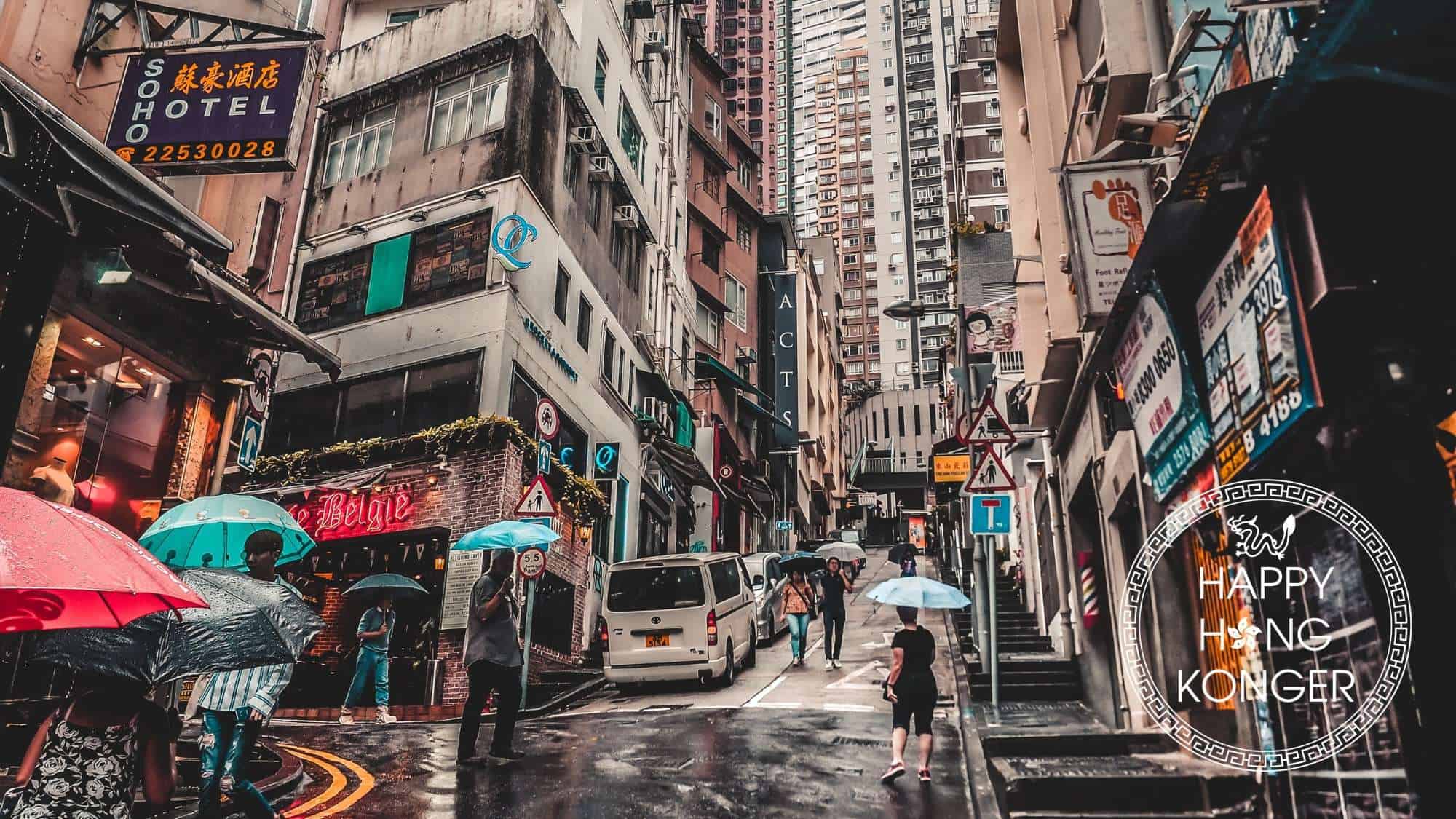Categories > Guides and Tips

Typhoon Season in Hong Kong: EVERYTHING You Need to Know
- When is typhoon season in Hong Kong?
- How often does Hong Kong experience typhoons?
- How do typhoons affect Hong Kong?
- What is the impact of typhoons on Hong Kong's infrastructure and economy?
- What are the challenges of disaster response for residents in Hong Kong?
- How does the Hong Kong government respond during natural disasters?
- What are the common natural disasters that affect Hong Kong?
- What was the worst typhoon to ever hit Hong Kong and what did it do?
- What is Hong Kong’s typhoon warning system?
- Has there ever been a destructive tsunami in Hong Kong?
- How should I prepare for a typhoon when in Hong Kong?
- Prepare a first-aid kit
- Secure your home
- Familiarize yourself with your neighborhood
- Constantly check the weather app
- Know the emergency hotline
Hong Kong is no stranger to typhoons. Ferocious storms frequently wreak havoc on our city.
If you’re new to this, though, you’ll need guidance. From the typhoon warning system to what should be in your first aid kit, we’ve collected all the information you need to know about the typhoon season in Hong Kong.
Keep this article bookmarked in case of emergency! And with that, let’s get started!
When is typhoon season in Hong Kong?
Typically, the typhoon season in Hong Kong is from July to September.
How often does Hong Kong experience typhoons?
According to the Hong Kong Observatory, there are about 5 or 6 typhoons per year in Hong Kong on average. This statistic is based on the record that has been documented since 1961. This means that Hong Kong experiences typhoons frequently.
How do typhoons affect Hong Kong?
Typhoons affect Hong Kong in various ways, including claiming lives throughout the years. Typhoons have also caused power outages, canceled flights, and wide-scale destruction (trees falling, scaffolding collapsing, etc).
This is based on recorded information from the major typhoons that hit Hong Kong over the years.
What is the impact of typhoons on Hong Kong’s infrastructure and economy?
Typhoons affect Hong Kong infrastructure by making roads impassable and damaging buildings and houses with strong winds and flying debris. This and the interruption of business activities leads to economic losses, as during Typhoon Mangkhut, which allegedly led to losses worth HK$4.6bn.
What are the challenges of disaster response for residents in Hong Kong?
Based on the 2015 Hong Kong Disaster Preparedness Scoping Study, the main disaster response challenges for Hong Kong residents are lack of preparedness (they didn’t know where to go), immobility (specifically from disability), and worry about their personal belongings.
How does the Hong Kong government respond during natural disasters?
The Hong Kong government responds during natural disasters by deploying a team of medical professionals to places affected by the typhoon, as well as providing psychosocial support to survivors.
They typically tend to survivors depending on their assessment of the severity of their concern. They also make counseling available for those who need it following a disaster.
What are the common natural disasters that affect Hong Kong?
According to the Fire Services Department in Hong Kong, common natural disasters that affect the city are landslides, scorching weather, tropical cyclones, floods, hillfire, and thunderstorms.
What was the worst typhoon to ever hit Hong Kong and what did it do?
The worst typhoon recorded to hit Hong Kong was an unnamed one from 1937. It’s considered the worst because it killed around 11,000 people in the city. That was equivalent to 1% of Hong Kong’s population at the time.
Macau wasn’t left unscathed either because there were 21 casualties from this typhoon, although the figures obviously pale when compared to Hong Kong’s casualty numbers.
What is Hong Kong’s typhoon warning system?
Hong Kong’s typhoon warning system is one that uses 5 typhoon signals to announce and indicate to residents the strength of a typhoon. These signals are T1, T3, T8, T9, and T10, each corresponding to different severity of the typhoon.
- T1 is no cause for alarm. That said, citizens should be on alert because there’s been a tropical cyclone detected around 800 km from Hong Kong. During T1, it’s recommended to check the news from time to time for any weather updates.
- T3 is when there are strong winds expected to come in the city that could possibly hit up to 110 km/h (or more). Kindergartens are urged to stay in their homes however, most public transport will still run as usual. That said, flights, cruise, and other businesses could potentially close.
- T8 means that stronger winds are expected. Before the local government announces the issuance of T8, expect plenty of announcements urging the people to stay indoors. During this time, almost everything is closed (public transport, schools, businesses, offices, etc)
- T9 is issued when there’s a notable difference in the intensity of the wind from T8, which means extremely stronger winds. People are urged to stay indoors and stay away from windows.
- T10 is when winds are expected to reach more than 220 km/h, which can cause heavy damage to roads and other infrastructures. The same instruction is given to people as the one in T9.
Has there ever been a destructive tsunami in Hong Kong?
Since Hong Kong is far away from the active seismic zones, there has not yet been a recorded destructive tsunami in Hong Kong.
That said, while the possibility of a tsunami hitting the city is quite low, the Hong Kong Observatory is still diligent with tracking sea-levels. If needed, they will issue a tsunami warning to the Hong Kong residents so that the people can prepare accordingly.
How should I prepare for a typhoon when in Hong Kong?
Here are some ideas to help you prepare for a typhoon when in Hong Kong:
Prepare a first-aid kit
Unfortunately, when there’s a typhoon, people are more susceptible to injury which is why having a first-aid kit with you is a must. According to health professionals from Hong Kong Red Cross, here are the items that you need to include:
- Disposable gloves
- Normal saline
- Triangular bandage
- Safety pins
- Band aids
- Gauze pads (5cm x 5cm and 7.5cm x 7.5cm)
- Eye pads
- Elastic bandage (5cm and 7.5 cm)
- Micropore (1.25cm)
- Torch
- Alcohol pad
- Scissors
- Dressing forcep
- Whistle
- Compass
- Instant cold pack
- Rescue Blanket
They also sell this kit on their website we linked above, so you don’t have to go through the tedious process of procuring each item.
Secure your home
To make sure that nothing breaks or causes injury, it’s important to secure your home. For example, if the screws on your windows are loose, make sure to stabilize it before the typhoon hits.
Familiarize yourself with your neighborhood
In case you need to evacuate, it’s important to familiarize yourself with your neighborhood. This isn’t as simple as knowing what street your neighborhood cafe is or knowing where to buy fresh food items (although that’s pretty helpful too).
You should also know where the evacuation sites, hospitals, convenience stores, and drug stores are.
Constantly check the weather app
Being aware of the weather announcements is important while preparing for the typhoon. This way, you’d better know what you should do. Do you need to stay indoors until the typhoon passes? Or is going outside still safe and you can still go about your day?
You can always check Hong Kong Observatory’s website to get the latest updates.
Know the emergency hotline
If there happens to be an emergency, you have to be ready to call the ambulance or the authorities, which is why it’s important to know and remember the emergency hotline.
Just dial 999 and it will connect you to the fire department, the police, or the ambulance (if needed).
You can also send a message to 992 if you have speech or hearing impairment.





